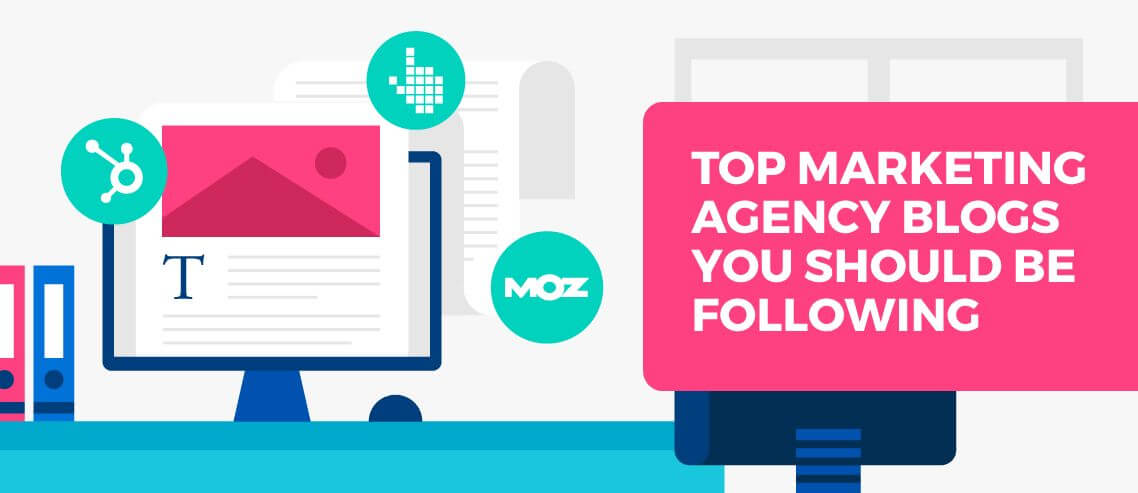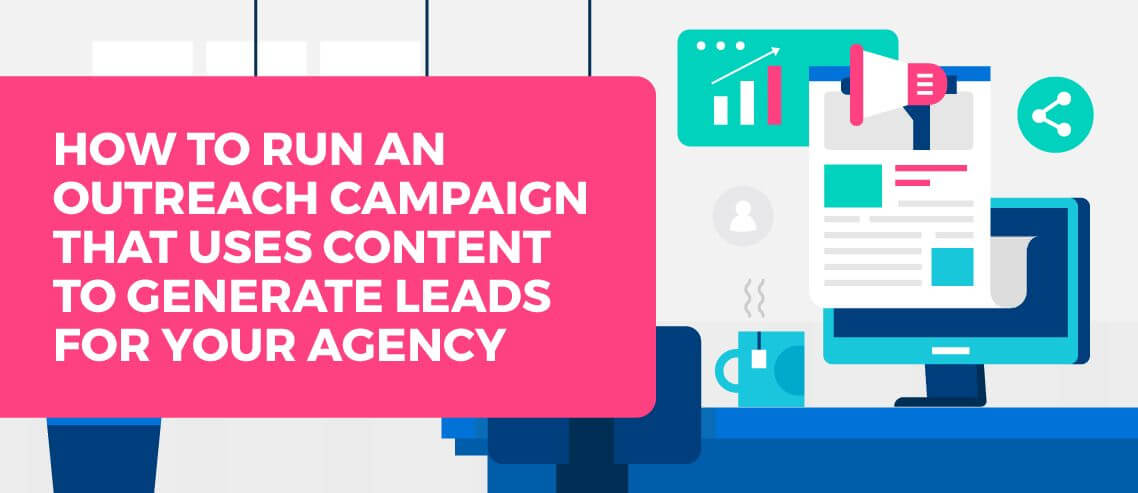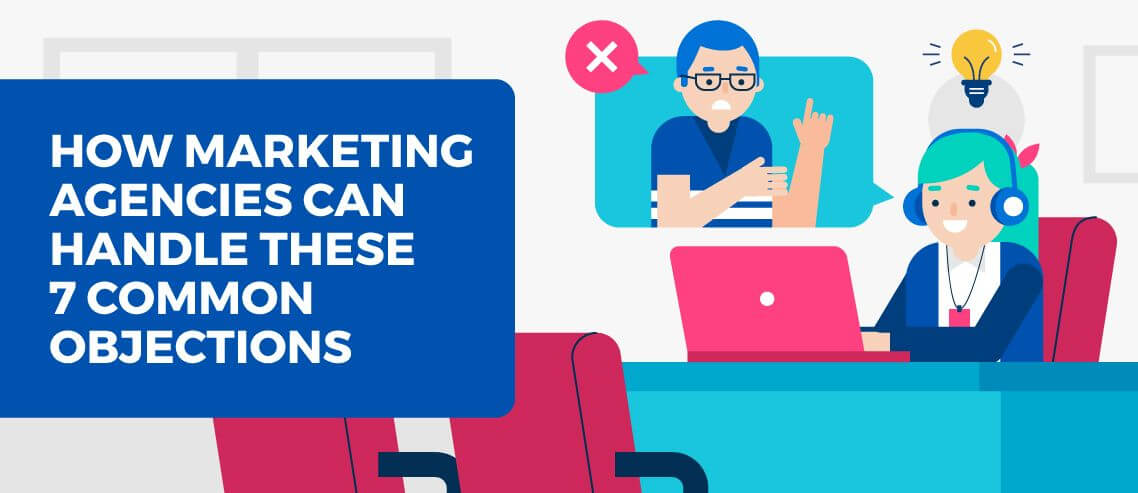The Blueprint for a High-Converting Influencer Outreach Campaign

Contents
Want to build a successful business?
Start building relationships.
Because as it turns out, people that have powerful connections are the most successful in any industry – entertainment, small business, technology, management, and everything in between.
You know that influencer marketing focuses on paying or inspiring key leaders to drive your brand’s message and get the word out. And if you want to rise above all the noise and build buzz around your brand, then you must invest in it. Influencer marketing can help you increase traffic, get links, and gain more customers.
In fact, according to a Tomoson poll, marketers rate influencer marketing as their fastest-growing online customer acquisition method, above organic search and email marketing.
But for most of us, gaining traction with influencer marketing is difficult. Trying to get the attention of influencers and leaders if you don’t have any connections can often leave even the best of us feeling burnt-out.
But I promise: it’s totally possible. And I’ll show you how.
1. Know Your Targets
You will get absolutely nowhere if you don’t know where you’re going. It may seem obvious, but many people get this wrong. They target the wrong social media influencers who have no connection to their audience, then end up scratching their heads and wondering why it didn’t work out. To find your targets, you need to answer these two questions:
- Who are the most influential people in your industry?
- What is their reach?
Question #1: Who Are the Most Influential People in Your Industry?
Social media is full of people who view it as nothing more than a source of traffic. You know the type: they have thousands of followers yet hardly get any likes, they have hundreds of niche blogs, and they’re tweeting a new article every second. You need to be able to separate this type of person from the true influencers – and finding them in this jungle isn’t easy. Fortunately, there are many tools (free and paid) that you can use to help you build your list of influencers. Here are three of my favorites:
1. Followerwonk
Followerwonk is a freemium tool that identifies influential people on Twitter. Once you sign up, click on “Search Bios” from the main screen:

Then, type in your keyword and select “search Twitter bios only”:

Followerwonk will then show you a list of the most influential people sorted by their social authority. Social authority is Followerwonk’s ranking system that measures users’ potential on Twitter on a scale of 1 to 100. Social authority rankings are based on:
- The retweet rate of users’ last few hundred tweets
- The recency of those tweets
- A retweet-based model trained on user profile data
When you find an influential person, add them to your list.
2. Buzzsumo
Buzzsumo can also help you find influencers by looking at their Twitter bios. But it’s a much more diverse tool than Followerwonk and can even be used to dig deeper into your research.
I’ll show you both methods.
Method 1
To find influencers, click on the “Influencers” tab.

Next, enter your keyword and click “Search.”

This will list all of the people who have that keyword in their Twitter bios. If someone appears to be a good fit, you can add that person to your list.
Method 2
First, go to the “Content Research” tab. Next, paste the URL of any popular article in your industry and click “View Sharers.”

Buzzsumo will show you all of the people who shared this article on Twitter. You can see their bios and again, add them to your list.
3. Google Search
Google is a great place to find influential websites. If a website is showing up frequently in Google Search, that means it’s authoritative and possibly a great fit for your list. You can find these influential blogs by searching for different keywords and checking which websites are coming up over and over again. One keyword will not reveal much, but once you’ve searched for 5-10 keywords, you’ll find yourself with a list of potential websites to reach out to.
Question #2: What is Their Reach?
Are you familiar with the Pareto Principle, a.k.a. the 80/20 rule? Basically, it states that 20% of your customers represent 80% of your sales or that 20% of your time produces 80% of your results, and so on. Well, this universal adage is also applicable to your list, meaning that roughly 20% of the people on your list hold 80% of the power in your industry. That’s why you need to find that 20% and focus your efforts on those people. Sound fun? Let’s begin.
Step 1: Create a spreadsheet
First, create a spreadsheet and add seven columns to it: Name, Website, Twitter, Facebook, Domain Authority, Social Authority, and Blog Engagement.

Next, import all the people from your list and add them to your spreadsheet. If you don’t have their website, Twitter, and Facebook URLs, add them now before you proceed to the next steps.
Step 2: Find their domain authority
Domain authority is a score developed by Moz, based on a scale from one to 100, that predicts how well a website will rank on search engine page results. The higher the score, the better the ability to rank.
To find a site’s DA, go to Open Site Explorer and enter the homepage URL of your target. The tool will show the domain authority of the website. Enter this score in your spreadsheet.

The higher the domain authority, the more influence that site has on Google.
Step 3: Find their social authority
We’ve already discussed social authority above. To find social authority, go to Followerwonk and enter the Twitter @username of that person:

Enter this score in your spreadsheet.
Step 4: Find their blog comments
A person with a smaller following can still be an influencer if they have a passionate following, while a person with thousands of followers but lower engagement will not be able to match those results. Take a look at their blog and see how many comments a post usually gets to help you determine engagement.
Now, put these influencers into different tiers.
Using the research and data you’ve gathered, sort your list on the basis of social authority or domain authority. Separate the influencers into three tiers:
Tier 1: People who hold the most power; you’ll spend the majority of your time building relationships with them.
Tier 2: People that are not very influential but still have a huge audience.
Tier 3: People who are just starting out; these will be the people who are easiest to reach out to.
Remember, you don’t have to be crazy-precise with this step. As you start building relationships with these people, you’ll be able to clearly see which people are influential and which ones aren’t.
2. Get Their Attention
Once you know who you’re trying to reach, the next step is to be so valuable to these influencers that they can’t help but notice you. Look into offering them the chance to join your affiliate program and earn some commission. As Zig Ziglar once said:
“You will get all you want in life, if you help enough other people get what they want.”
It’s true: the best way to connect with influencers and grow your network is to give or add value. We might think we have nothing to offer these influencers, but remember, they are also human like us.
They are busy, underpaid, under-appreciated, and would like to be more influential. If you have anything that can make their life easier, then you’ll naturally be able to build relationships with them.
Here’s the catch: coming up with ideas to impress VIPs is hard. You want fresh ideas that are related to helping them solve their problems, but it’s all been done before, right? Don’t worry – with these 6 strategies, it’s easier than it seems.
Strategy 1: Promote Their Work
As I mentioned earlier, the people we look up to are also hustling. And if you can do anything to promote their work, they’ll appreciate it. Here are some examples of how you can do this:
- Find an article they’ve shared on social media, and share it to your followers with the same passion you would if it were your own content – and let that person know you’ve shared it.
- Write a review of their latest ebook on Amazon, or rate their podcast on iTunes.
- Highlight them in your newsletter and then send them a link with a short but warm email.
- Tweet or comment on their latest post.
Strategy 2: Appreciate Them
If the influencer has done or said something that’s been helpful to you, show your appreciation.
You can send them a short email or tweet about your results, but with all the junk floating around these days, they may tune out your message. To help your message stand out, tell them specifically what you implemented and the results you got. For example, “Your XYZ strategy helped me to book three more clients!” They’ll be more likely to respond to you to see how you got those results.
Strategy 3: Connect Them to Resources
You might be thinking that you have nothing to share with these VIPs. But everyone has different experiences, so think about what you know that might help them. Connecting them to resources is one idea.
- Know of a tool or app that might be helpful to the influencer? Awesome, share it with them.
- Have a friend who might be a good fit for their team? Refer your friend to that influencer with a note of introduction.
- Know of any organizations they may not have heard of but you think they would love? Send them the information and offer to connect them.
- Native to the city where the influencer lives or is visiting? Offer to help them with recommendations for restaurants, hotels and services.
Strategy 4: Connect Them to Others
Connecting people is a true art form – and if this is a skill you have, take advantage of it – influencers are always looking to meet other great people.

Think about the people you already have in your network. It could be a colleague, a strategic partner, or another influencer. Reach out to both parties and see if they would like an introduction. If you get two ‘yeses’, then send both of them a warm email introducing each other. A simple act like this could end up adding tremendous value to their business or life – and they’ll remember you for it.
Strategy 5: Offer advice
It’s really common for people to excel in one field but struggle in other areas of their life. If you happen to be an expert in business, health, relationships, or some other subject, you have something to offer – your advice. Of course, the key here is to find out the influencer’s struggle. You can’t randomly email someone and give them tips on something they may not need your help with. I’d recommend checking out their Twitter feed. You might see a business expert you admire sharing how he’s trying to quit his coffee addiction. If you have some advice to offer, you can send him a short email or a tweet sharing your tips and support.
Strategy 6: Send clients/customers their way
Everyone wants more customers and clients. That includes the influencers and VIPs on your list. So if you know a friend or family member who may benefit from an influencer’s product or services, refer them. You could also become one of their customers or clients. The influencer will really appreciate your effort, and will want to give back in any way he or she can.
3. Build Relationships
So we’ve talked about some strategies for getting noticed. But it’s the relationship part where the benefits come. When you’re building your business, the number of influential connections you have can make a huge impact on your business. So you need to build as many relationships as you can and keep up with the influencers you are trying to connect with. But how do you do it? That’s where the following strategies come in. Think of them as recurring strategies – you can’t just do them once and be done. You have to keep implementing them to build these relationships.
#1: Leave Blog Comments
The number one method for keeping up with an influencer is to leave helpful comments on their blog posts.

You don’t have to leave comments on every post, only the ones you really like. Just make sure you’re sincere and truly engaged – don’t comment just for the sake of commenting. The influencer is likely to notice heartfelt comments, and will appreciate you adding value to their community.
#2: Feature Them in an Article
The second method for building relationships with influencers is to feature them in your content. You can do this by:
- Quoting something that they said
- Mentioning or linking to an article they wrote
- Sharing their results from a campaign, etc.
After the article is published, sent the influencer a brief note with the link to the article. They’ll appreciate the shout out, and it will definitely show them that you admire their work.
#3: Link to Them From Your Guest Posts
Let’s say you’re writing a guest post for a big media outlet. This is a great opportunity for you to mention and link to an influencer’s post from your own. Most people would love to see their name on a big media site, and they’ll be grateful to you for featuring them. Just remember: the key here is that your guest post must be on a bigger website than the influencer’s.
#4: Interact With Them on Social Media

You can’t leave social media out of the mix when you’re looking to interact with influencers. Social media is where people share their wins and pains. If you’re in that influencer’s social media circle (and you should be), try to interact with them regularly. This could mean:
- Leaving funny comments
- Offering to help them with something
- Voicing appreciation for their work
4. Reach Out
This is the most important stage. This is where you’ll be pitching your product or asking for a link or help. Since you’ve carefully built a strong relationship with the influencer, it’s likely that they would love to help you. So just a polite ask should be enough. Using a simple email, you can:
- Get shares
- Get guest blog placements
- Get backlinks
Here’s how:
Goal #1: Get Shares
One of the easiest things you can do is get an influencer to share your content. I’d recommend that you highlight the influencer in your article – that way, they’ll be much more likely to share it. Case in point is entrepreneur and coach Selena Soo, who wrote a guest post for Ramit Sethi’s website,I Will Teach You To Be Rich, and mentioned Derek Halpern, the founder of Social Triggers. Derek shared the post on Facebook and Selena got over 850 clicks. To let the influencer know that you’ve mentioned them, you can send a short email like this:Hey NAME, I just published an article on TOPIC NAME. Check it out: URL As an entrepreneur who has taught a lot of people about TOPIC, I mentioned your awesome quote to beef up this post. ~ YOUR NAME
Goal #2: Get Guest Blog Placements
Getting guest blog placements on high-quality blogs isn’t easy. They follow a very strict set of guidelines. But if you’ve built a connection with an editor, you can use this connection to land a guest post on that blog. One great example to mention here is Aaron Orendorff. Aaron built a connection with Copyblogger’s Demian Farnworth and was able to get a guest post published on Copyblogger – which doesn’t accept content from unsolicited authors. Here’s an example of an email template for trying to land a guest post:Hi NAME, It would be a pleasure to write for SITE NAME. I know you have very strict guidelines, so just to show you what I can bring to the table, here are some of the posts that I’ve published in the past:Post #1Post #2Post #3 I’d love to be your next guest author. Here are some of the topics that I think would resonate really well with your audience:Idea #1Idea #2Idea #3 What do you think? ~ YOUR NAME
Goal #3: Get Backlinks
Getting shares and guest posts is fine. But if you want backlinks, you should be very careful. Influencers are very cautious when they link to a website. If you’re asking for a link from an influencer, I would recommend that you make sure:
- Your article is high-quality
- The influencer’s post is relevant to your article – meaning, a link to your article naturally fits in the content
Only then you should reach out. Here’s an email template you can use:
Hi NAME, I just found your article on TOPIC.Remember this?URL In this article, you’ve mentioned SUB-TOPIC. I actually have a great piece on this SUB-TOPIC: YOUR ARTICLE URL In it, I’ve shared [A LITTLE DESCRIPTION].It would make a nice addition to your post. If not, no worries 🙂 Cheers ~ YOUR NAME
Sustain The Growth
Now that you’ve learned how to get the attention of influencers and build relationships, what can you do to sustain growth? Try:
- Taking the conversation a step further by talking on the phone.
- Growing together with a joint venture.
- Creating repeatable processes for building relationships with new influencers.
- Getting introduced to new VIPs through your current connections.
Getting a share or a backlink is just the beginning. There are so many other things you can do if you care about the influencer. If you put in the work, you’ll see your conversion rates soar.
Because when you add value and stand out as a giver, people are naturally going to want to be around you. They’ll try to help you grow. So, get out there and start helping people in a way they can’t help but notice.
How to use cold email to build your personal brand
Many of the lessons from influencer outreach outreach apply to building your own personal brand.
Your personal brand is everything. It’s your reputation, how people see you, your value. It’s you, your business, your products…all rolled into one.
Personal branding is about connecting and engaging. It is not about selling.
To do that, you need to be an expert. You need to understand your industry inside and out, and keep growing and updating your skill set and knowledge base at every opportunity. No matter your business, industry, or niche, you’ll want to cultivate a reputation as an insider with info and expertise second to none.
Be open and approachable and accessible (social media, live streaming, quick responses). If appropriate or in keeping with your brand, consider a defining characteristic or trait (Bill Nye and his bow ties, Richard Branson and adventure, Steve Jobs and turtleneck sweaters, Ferriss and using himself as a guinea pig, and so on).
And use cold email to nurture it all.
“While traffic is an introduction, engagement builds relationships. An email list and social media audience full of loyal followers and excited fans are important when marketing yourself and building community.” ~Emmelie De La Cruz
Provide Something That Helps Them
The introduction in your first email should be short because no one really cares all that much about you (at least not at this stage). Instead, get to how you can help them as fast as possible.
Give them a free tip that has to do with their industry or business. Recommend a relevant article or link or tool that can solve a pain point for them. Offer a free template or cheat sheet. Whatever it is, make it useful, make it high quality, and don’t ask for anything in return. Nothing.
Engagement is the foundation of a strong relationship. So engage.
An unsolicited offer to help or make their lives easier is infinitely better than an unsolicited ask to buy. They’ll respect and appreciate you for it. You want them to feel like you’re in the business of helping others, and nothing more.
Share Your Expertise and Best Stuff
For free. Personal branding is all about your reputation and what people are saying about you and feeling toward you.
Neil Patel, as one example, gives away tens of thousands of dollars’ worth of content and resources every year. Why? Because it gets his name out there. It grows positive feelings. It’s made him an expert in his field. And he’s made that money back and much, much more as a result.
He’s had clients grow their business by 290% using the same tactic. You can get there, too. There’s no better way to grow your reputation, increase awareness, demonstrate that you’re trustworthy, and ultimately, make you an authority and instantly recognizable in your field.
That’s the whole goal of personal branding.
Vary Your Email Content
In theory, it’s a very simple plan. But it’s also very easy to fall into the trap of just sending out the same quick note with the same “stuff.” Remember, variety is the spice of life. 2-3 emails in the beginning that all link to a blog post – even if the posts themselves are different – will quickly get tired and boring. You might even get slapped with a “blog post guy” label.
You want to be an expert. An authority. Not the “blog guy” or “infographic gal.” Mix it up: blog posts, interviews, tutorials, opinions, videos, live streaming, Q&A, white papers, case studies, podcasts, infographics, quizzes, and more.
Become their go-to guy or gal for all things related to your field and niche. A recent Demand Gen report found that 47% of buyers viewed 3-5 pieces of content before engaging with a sales representative, and 51% of B2B buyers use content to research during a purchase decision.
Build your reputation by creating and giving away top-notch content…and they’ll come to you when they’re ready or need to buy.
There are other things you could do. You might target an influencer and cultivate a relationship, or start a community, or rock the proverbial boat. Whatever you do, make it authentic.
Personal brand is about your exposure and the opinions surrounding it. Email allows you to control that, spread awareness, and engage like no other platform. Starting from the “despised” cold email, you can build up and out from nothing.
“Personal branding is about managing your name — even if you don’t own a business — in a world of misinformation, disinformation, and semi-permanent Google records.” ~Tim Ferriss
Cold emailing is not for the faint of heart. You can do a lot of damage if you half-ass it. Once you end up in the spam folder, it’s hard to break out of that digital prison.
Study up on it, learn all you can about it, look to others for tips and inspiration, and avoid credibility and legitimacy-breaking words, phrases, and practices. Do that, and you can successfully use cold email for lead generation, engagement, promotion…
…and building your brand. That’s worth every penny you can spend on it. A strong personal brand in the 21st century is synonymous with a strong and prosperous business.
The only time cold emailing should make you break out in a cold sweat is if you opt to not do it.
Image: Pixabay





